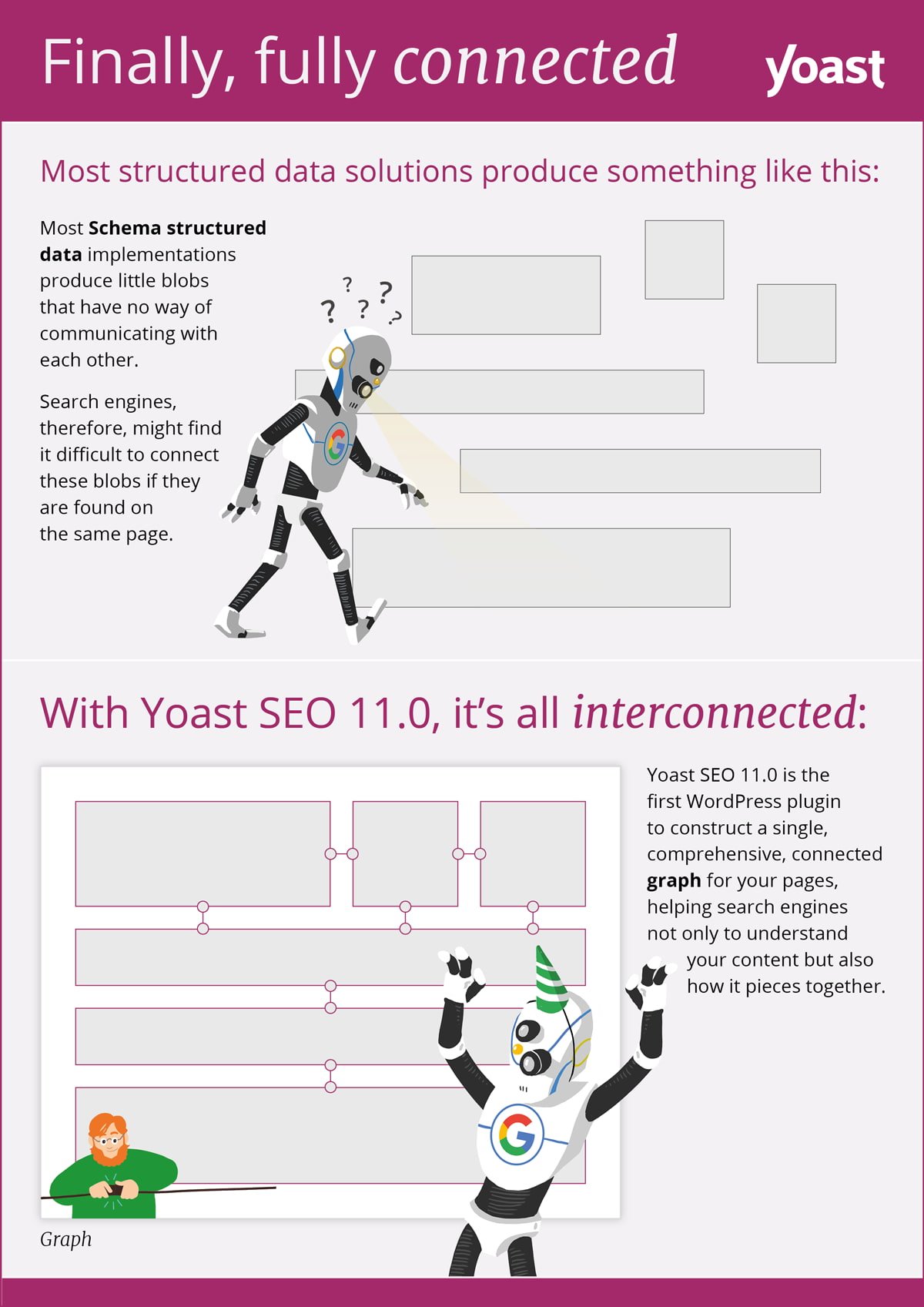Once upon a time, there was a little robot who came to a website to try to figure out what it was all about. The robot read some words and followed some links and thought: “Well, there are a lot of mentions of this particular word, so the page must be about that!” She sent out a message to the mother ship to file the page in a giant index so the page could be retrieved whenever somebody needed to know about that word. The robot worked very long hours for a very long time to file all the pages into the index that she could find.
After a couple of years of filing away pages, the robot became very clever indeed. Her boss at the mother ship trained her to read better and faster so she could better understand what any page was about. She could even tell when it would make most sense to show it. She even learned how to use context to judge a piece of writing instead of just finding mentions of a particular term.
But, smart as the robot had become, her creators needed extra help to get her to fully understand the world. The robot did not have the capacity to grasp every single piece of knowledge and understand how all these pages were connected.
Luckily, some clever humans created something incredibly clever called Schema, which was a bit like a giant thesaurus for robots just like our little hero.
In it, she found everything she needed. It told her what she could look for to determine what a particular page was about, be it a product, an event or even a person. She learned about different movies, books and authors. About recipe ingredients and cooking instructions. She found out how people relate to each other, to past events and to abstract concepts that were always a mystery to her. Everything she read was instantly clear to her — she was so incredibly happy!
Websites which used this Schema thesaurus helped her, and all the other robots like her, to make sense of the world. She finally knew everything. In return, she rewarded those sites with spectacularly colourful listings when people looked for them. But she could only reward those sites who implemented it well and that became a problem for other sites who didn’t know how to use it properly.
She soon found that there was a lot lacking regarding Schema. Many sites offered only tiny pieces of the magical Schema data and none of it was connected to the sources that could help her do her job better. She tried asking for help – pleading with site owners to improve the way they used SCHEMA, but to no avail. Until, many years later, a hugely popular plugin for the biggest content management system in the solar system stepped in to help out the little robot.
Tentatively, she looked at the internals of the Schema implementation of the plugin, codename Yoast SEO 11.0. “Wow, this is just what I need!”, she said. “I’ve never seen anything like this before! This is Schema that I can read and understand. It is complete, it shows me where pages are and how people and organizations connect. Most importantly, it is interconnected! I no longer have to guess where everything goes. It’s all in a graph – a neat little package – ready for me to read, understand and file away!”
And they all lived happily ever after.
(Yes, your author has read Marieke’s posts on storytelling)
Results of using Schema structured data
Schema-powered structured data is one of the hardest, most abstract pieces of web technologies to describe, while also being one of the most important ones. I hope the story above has made the concept a lot clearer for you. Now that you’ve formed a mental image of what we’re talking about here, let me show you what adding structured data to your site can lead to.
Before you read on: we’ve recently launched the Understanding structured data training course. This course helps you understand structured data in detail and teaches you how to improve your own chances of getting rich results. Get access to this course, all of our other SEO courses and extra features in Yoast SEO by going Premium:
A better understanding of your site
We always say you should do everything in your power to help both
search engines and searchers to find out what your site is about. Using
structured data gives you superpowers in the eyes of the search
engine. Since you are labeling the most important parts of your content
or site elements and connecting them to other parts, you are making
sure that search engines truly understand your site. No longer do they
have to guess about what everything means — you can just tell them.
Getting stuff into Google’s Knowledge graph gets a lot easier once you add relevant Schema to your site. Not only that, other platforms like Pinterest love this kind of data as well.
With Yoast SEO 11.0, we’re not only making it easier for search engine robots to read your site, but also to understand. We do this by making connections and offering the structured data in a so-called graph. See the image below for a graphical representation of this idea:



No comments:
Post a Comment